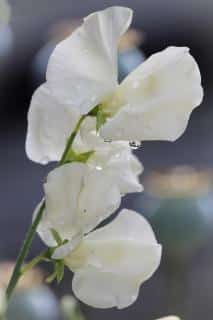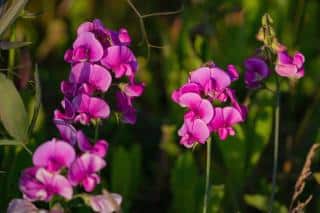

Sweet pea is a flower that we indulge in all summer long.
A summary sweet pea facts
Name – Lathyrus odoratus
Family – Fabaceae
Type – climbing vine
Height – 6 ½ to 16 feet (2 to 5 meters)
Exposure – full sun
Soil – ordinary
Foliage – deciduous
Flowering – May to October depending on the variety
Its finely drawn flowers and its delicate fragrance makes it one of the most beautiful annuals.
Try growing sweet pea once, and you will never regret it…
Even though sweet pea isn’t a very demanding plant, it still is at its best in rather rich soil.
If you purchase your sweet pea in a nursery pot, don’t transplant it to the ground until the end of spring.

A good combination is to sow some of the seeds in a sheltered spot in winter, and the other part at the beginning of spring, directly in the ground. That way, you’ll have two different blooming seasons.
Remove dead flowers as they appear, in order to boost flower-bearing during the entire blooming season.

This fragrant plant adapts perfectly to growing along a lattice to which it will bind itself to, covering a wall or turning into a very fragrant miniature hedge.
To increase blooming, add cocoa hull mulch. It is both trendily aesthetic and at the same time a great fertilizer!